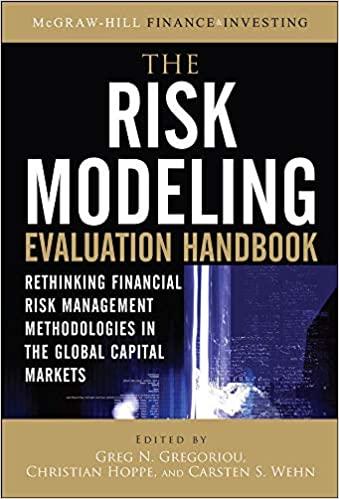Question
4. [16 points] Burton currently has $850,000 of long-term debt outstanding, 5,000 shares of preferred stock ($10 par) with a market price of $12, and
4. [16 points] Burton currently has $850,000 of long-term debt outstanding, 5,000 shares of preferred stock ($10 par) with a market price of $12, and 20,000 shares of common stock ($20 par) with a market price of $53 per share. They have used a WACC of 14% in the past to evaluate projects but want to determine their current required return for new investments.
Debt: Burton can sell a 10-year, $1,000 par value, 7 percent annual coupon bond for $975. A flotation cost of 2 percent of the face (par) value would be required. Additionally, the firm has a marginal tax rate of 34 percent.
Preferred Stock: Burton pays $1 dividends annually on their preferred shares. The shares are currently selling for $12 in the secondary market. They do not have plans to issue any additional preferred stock.
Common Stock: Burton's common stock is currently selling for $53 per share. The dividend expected to be paid at the end of the coming year is $4. Its dividend payments have been growing at a constant 3% rate. It is expected that to sell all the shares, a new common stock issue must be underpriced $1 per share and the firm must pay 1% of market value per share in flotation costs.
a. Calculate the after-tax cost of debt 5.05%
b. Calculate the cost of preferred equity 8.33%
c. Calculate the cost of common equity 10.77%
d. Calculate the WACC 8.26%
e. Re-calculate the NPV for the project in #1 above using this new WACC.
f. Should Burton accept the project when considering this revised cost of capital?
JUST LOOKING FOR E AND F.
THIS IS FOR THE CASH FLOWS
Burton, a manufacturer of snowboards, is considering adding a more sophisticated machine. The following information is given.
The proposed machine will cost $120,000 and have installation costs of $15,000. It will be depreciated using a 5 year MACRS recovery schedule. It can be sold for $10,000 after five years of use (at the end of year 5).
The incremental earnings before taxes and depreciation (EBITDA) are projected to be:
Year 1: 43,000, Year 2: 45,000, Year 3: 46,000, Year 4: 49,000, Year 5: 53,000
Burton pays 34 percent taxes on ordinary income and capital gains.
They expect a large increase in sales so their Net Working Capital will increase by $20,000.
The maximum payback period allowed is 4 years.
They are currently using a WACC of 14% to evaluate investment projects.
Calculate the initial investment required for this project
$155,000
Determine the incremental after-tax operating cash flows
-155,000, 36540, 42756, 38193.6, 37040.16, 417178.24
Find the terminal cash flow for the project
$41,718
Find the Payback period, NPV, IRR, and MIRR.
Payback 4.011 years, NPV -18132.04 IRR 8%
Should the new machine be purchased? Why or why not?
NO, NPV is Negative, MIRR is lower than hurdle
Step by Step Solution
There are 3 Steps involved in it
Step: 1

Get Instant Access to Expert-Tailored Solutions
See step-by-step solutions with expert insights and AI powered tools for academic success
Step: 2

Step: 3

Ace Your Homework with AI
Get the answers you need in no time with our AI-driven, step-by-step assistance
Get Started


